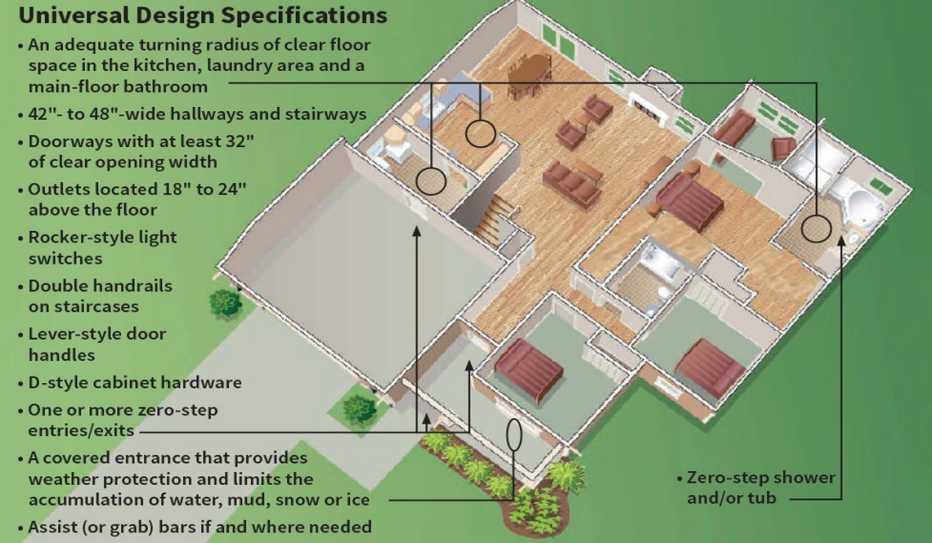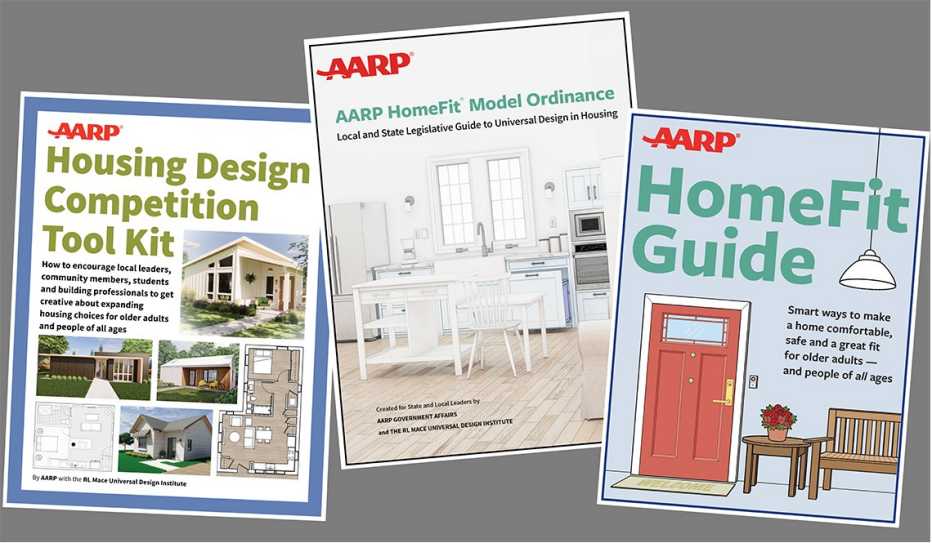AARP Hearing Center


Universal design, or UD, is a design framework that recognizes the diversity of (in engineering lingo) “human performance characteristics,” so spaces can be used by a range of individuals, regardless of age or ability.
An impediment to the broad adoption of UD features in housing has been the lack of understanding about what UD is — and isn’t.
Many consumers, including older adults, see custom accessibility features (e.g., ramps) as unappealing. But a home aligned with UD principles can help prevent a later need for pricey, specialized, often unattractive modifications by using designs, building techniques and fixtures that are stylish, functional, flexible and attainable.
UD Features Include:
- Step-free access into and out of a home
- Floor plans that contain a bedroom, the kitchen, full bathroom, laundry on a level that can be reached without using stairs
- A no-step, curb-less shower
- Bathrooms with enough floor area for using a moblity device (such as a wheelchair or walker)
- Wide hallways and doorways
Key Takeaways:
- A universally designed, age-friendly home is not the same as one that’s outfitted with equipment (such as a motorized lift) for specific medical, disability or mobility needs
- For a home to be marketable to an array of buyers or renters, it has to appeal to people who don’t yet have a need or interest in an age-friendly home
- With universal design, spaces and features are useful and stylish
- Without being told, few people would see a home with UD features and think it had been designed based on a resident’s age or condition
Housing that is attractively designed for people of all ages and abilities is useful for, well, people of all ages and abilities.
Free Publications About Housing and Universal Design


AARP HomeFit® is a registered trademark of AARP | Page published July 2025

































































